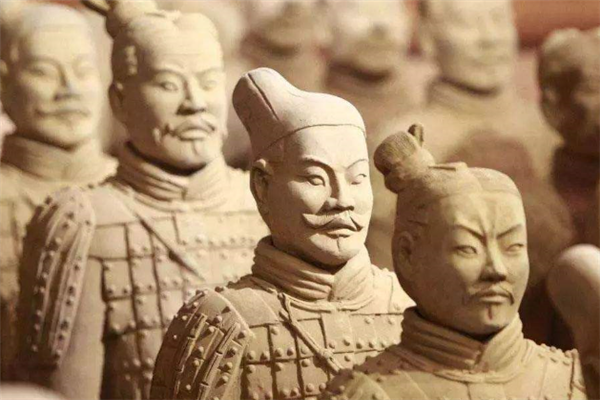
Were the Terracotta Warriors Real People?
The Terracotta Army is one of the most fascinating archaeological discoveries of all time. Standing guard over the tomb of China's First Emperor, Qin Shi Huang, for over two millennia, these life-sized figures have captivated the world with their intricate detail and sheer scale. But one question persists: were the Terracotta Warriors molded from real people?
The Terracotta Warriors Were Sculptures, Not Casts
While the incredible realism of the Terracotta Army might lead some to believe they were cast from living individuals, this isn't the case. The warriors are sculptures, meticulously crafted by hand from terracotta clay. Here's why the casting theory doesn't hold up:
- Complexity of the Figures: The warriors exhibit a remarkable level of detail, with unique facial features, hairstyles, armor, and even muscle definition. Casting such intricate designs on a large scale would have been technologically impossible at the time.
- Variations and Individuality: No two Terracotta Warriors are exactly alike. Each possesses unique features and expressions, highlighting the individual craftsmanship involved and making casting from real people highly unlikely.
- Construction Techniques: Analysis of the warriors reveals they were created using a combination of techniques. A standardized body was first formed, then details like heads, arms, and clothing were added, allowing for variation and individuality.
Transformation Over Time
The appearance of the Terracotta Warriors today is not how they looked when they were first created. Centuries buried underground and the circumstances of their rediscovery have led to significant changes:
- Original Appearance: Originally, the warriors were brightly painted in vibrant colors, showcasing the clothing, weaponry, and ranks of the soldiers they represented. This paint has largely faded or chipped away over time, leaving the terracotta exposed.
- Fire and Collapse: Historical accounts suggest that shortly after the tomb's completion, it was ransacked and set ablaze. This fire, along with the eventual collapse of the tomb's ceiling, caused significant damage to many of the warriors, leading to breakage and deformation.
- Environmental Factors: Centuries underground exposed the warriors to moisture, shifting earth, and other environmental factors that contributed to erosion, cracking, and other alterations.
Conclusion
The Terracotta Warriors stand as a testament to the artistry and skill of the ancient Chinese artisans. While not cast from real people, their life-like appearance and individual details continue to inspire awe. Further study and preservation efforts will continue to shed light on these silent guardians and the secrets they hold about China's past.
FAQs
1. Are any of the Terracotta Warriors the same?
No two warriors are exactly identical. Each was individually crafted, showcasing variations in facial features, expressions, and even armor details.
2. Why are the Terracotta Warriors different colors now?
Originally painted in vibrant colors, the paint has faded and chipped away over time due to fire, exposure to the elements, and the passage of centuries.
3. How tall are the Terracotta Warriors?
The warriors vary in height, reflecting the different roles they represent. On average, they stand between 5'11" and 6'5" (180 - 198 cm) tall.